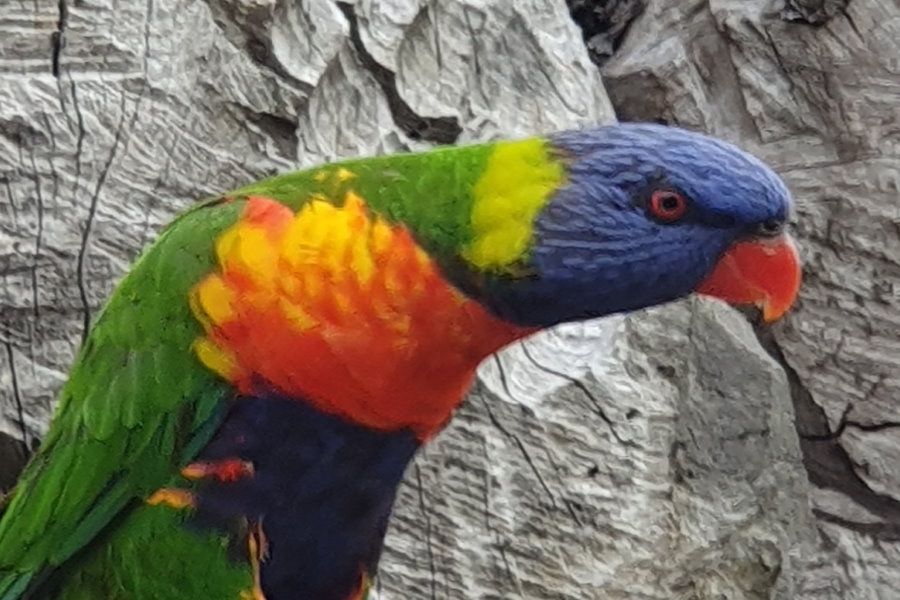Rainbow Lorikeet Whitsundays

The Rainbow Lorikeet is a unmistakable and favourite resident in the Whitsundays. With its bright red beak and colourful plumage, they are easily spotted zipping around the skies or hanging out in one of the many tropical trees.
You can't tell the difference between males and females, as both sexes look alike look alike, with blue heads, bellies, green wings, tail and back and a yellowish breast. They are often seen in loud and fast moving flocks, or in communal roosts at dusk. They are colourful characters that are very noisy at dusk, and you can see them in large groups all over the Whitsundays. Each night as the sun begins to go down, hundreds of these birds gather for what seems like a social chat, their loud squawking noises are unmistakable.
This colourful bird lives in temperate coastal regions across northern and eastern Australia, meaning they feel right at home settled into the tropical Whitsundays.
Commonly seen in the Whitsundays and are often hand fed at many site locations around the Whitsundays, and are frequently seen at most resorts. Very easily seen whilst bush walking or even as they land on the hand rails of anchored vessels, they are a common sight.
The Rainbow Lorikeet mostly forages on the flowers of shrubs or trees to harvest nectar and pollen, but also eats fruits, seeds and some insects. Rainbow lorikeets lay their eggs on decayed or decaying wood, usually in hallow limbs of tree. Both sexes prepare the nest cavity and feed the young, but only the female incubates the eggs.
Rainbow Lorikeets are true parrots and native to Australia and Indonesia. It is a true pleasure to see these colourful birds in the wild are they make their way around the skies. With a visit to the Whitsunday region, bird lovers will get the opportunity to view one of the worlds most exotic birds.












